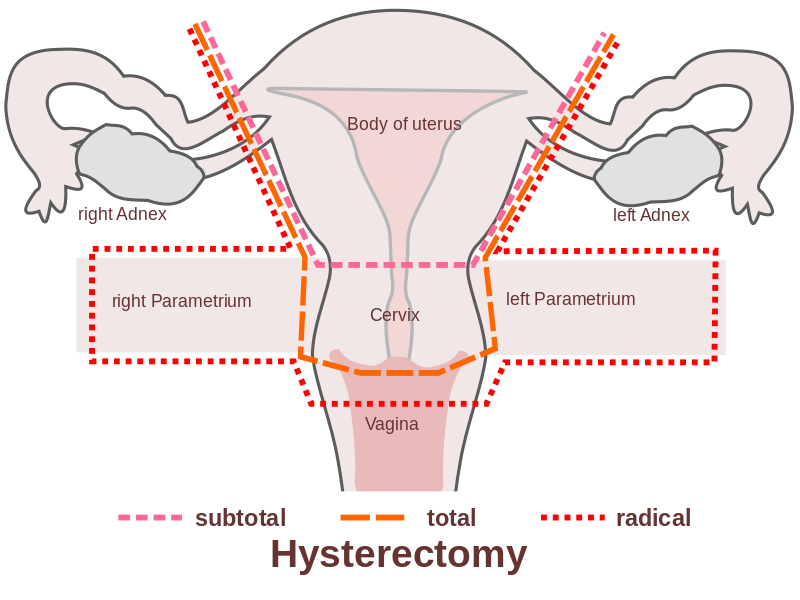Laparoscopic Hysterectomy
Laparoscopic Hysterectomy
What is a cystectomy?
A hysterectomy is a surgical procedure in which the uterus is removed. A complete hysterectomy implies that the uterus and cervix are removed. A hysterectomy may include removing the ovaries and fallopian tubes-that is known as a salpingo-oophorectomy and frequently is performed alongside a hysterectomy.

Utilizing a laparoscope — a thin, fiber-optic cylinder outfitted with a scaled down camera, lights and surgical instruments — surgeons have the ability to see inside and specialized access to the uterus, ovaries and fallopian tubes without making a huge entry point. The surgery is finished using just four little stomach cuts short of what one centimeter long. Indeed, even a huge uterus can be expelled laparoscopically utilizing this procedure.
Advantages of Laparoscopic Hysterectomy?
A traditional open hysterectomy requires a stomach entry point of ten to fifteen centimeters contrasted with the little cuts made for laparoscopic hysterectomy.
- Laparoscopy allows excellent visualisation (exposure) of organs. Post surgically, patients have an much quicker recovery They report less pain, minimal post-surgical utilization of painkillers and a quicker recovery time than women experiencing stomach hysterectomies, who more often than not require a three to multi day hospitalization and a lengthy recovery time of typically six to about two months.
- Small cuts with less chances of wound disease or/and breakdown.
- Better corrective outcomes
- Less odds of hernia development
- Significantly less bond arrangement and scarring contrasted with stomach hysterectomy.
An ovarian cyst or mass can be removed from an ovary and preserve fertility, yet it is feasible for another cyst or mass to re-structure. The danger of new blisters shaping just can be totally disposed of by evacuating the ovaries, a methodology called an oophorectomy.
What happens during a cystectomy?
There are two ways to perform the procedure, depending on the size and ultrasound appearance of the cyst or mass. Both are performed under general anesthesia
If the cyst is small and is believed to be benign, the doctor could choose to perform a laparoscopic procedure. A small incision is made in the navel area and carbon dioxide is introduced to lift the abdominal wall and create more space for the procedure. Small incisions are made to introduce a laparoscope (camera) and the instruments your surgeon uses to remove the cyst.
If the cyst is larger or there is reason to suspect cancer, your surgeon may choose to perform a laparotomy. For this procedure, larger incisions are made in the abdomen. These allow for removal of the cyst and possibly the affected ovary, uterus, fallopian tubes, fatty tissue called the omentum and surrounding lymph nodes, if necessary.
- IVF Procedure
- IUI Procedure
- ICSI Procedure
- Frozen Embryo Transfer
- Blastocyst Culture
- Embryo Freezing
- TESA
- M TESA
- PGD/PGS
- Fertility Preservation
-
- Diagnostic laparoscopy
- Laparoscopic ovarian drilling
- Laparoscopic ovarian cystectomy
- Laparoscopic myomectomy
- Laparoscopic conservative surgery for endometriosis
- Laparoscopic hysterectomy
- Laparoscopic salpingectomy
- Laparoscopic ectopic pregnancy management
- Laparoscopic sterilisation
- Laparoscopic recanalization
- Laparoscopic sacrocolpopexy
- Laparoscopic cervical circlage
- FAQS
